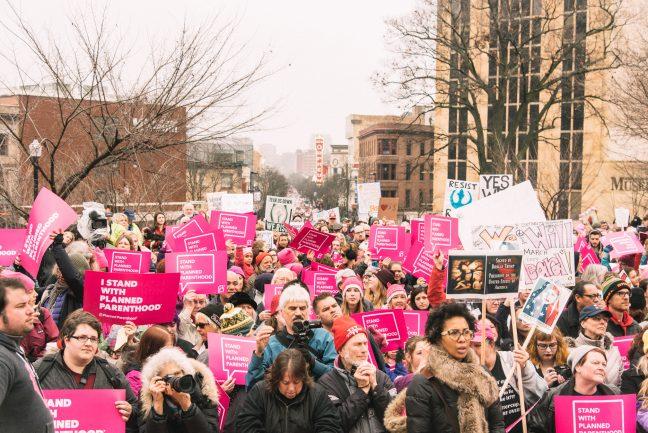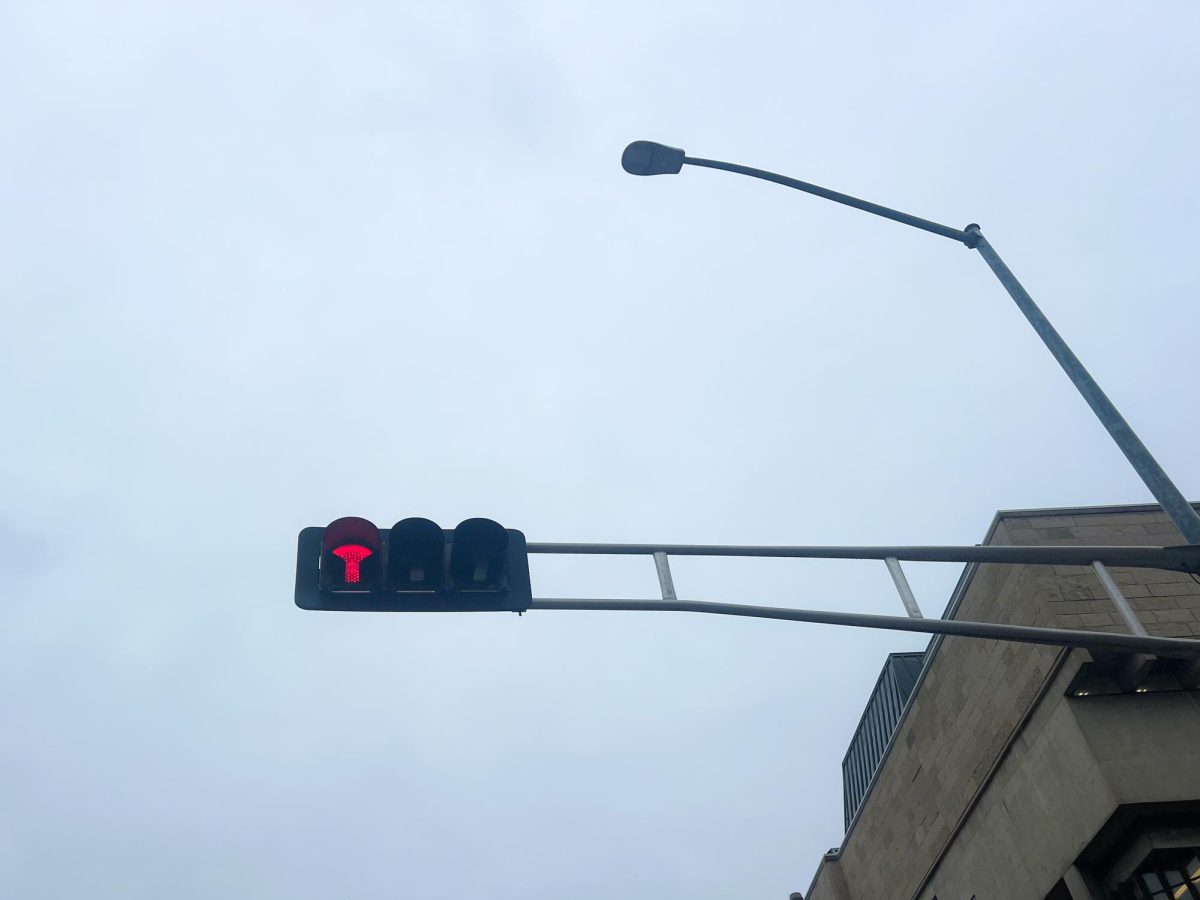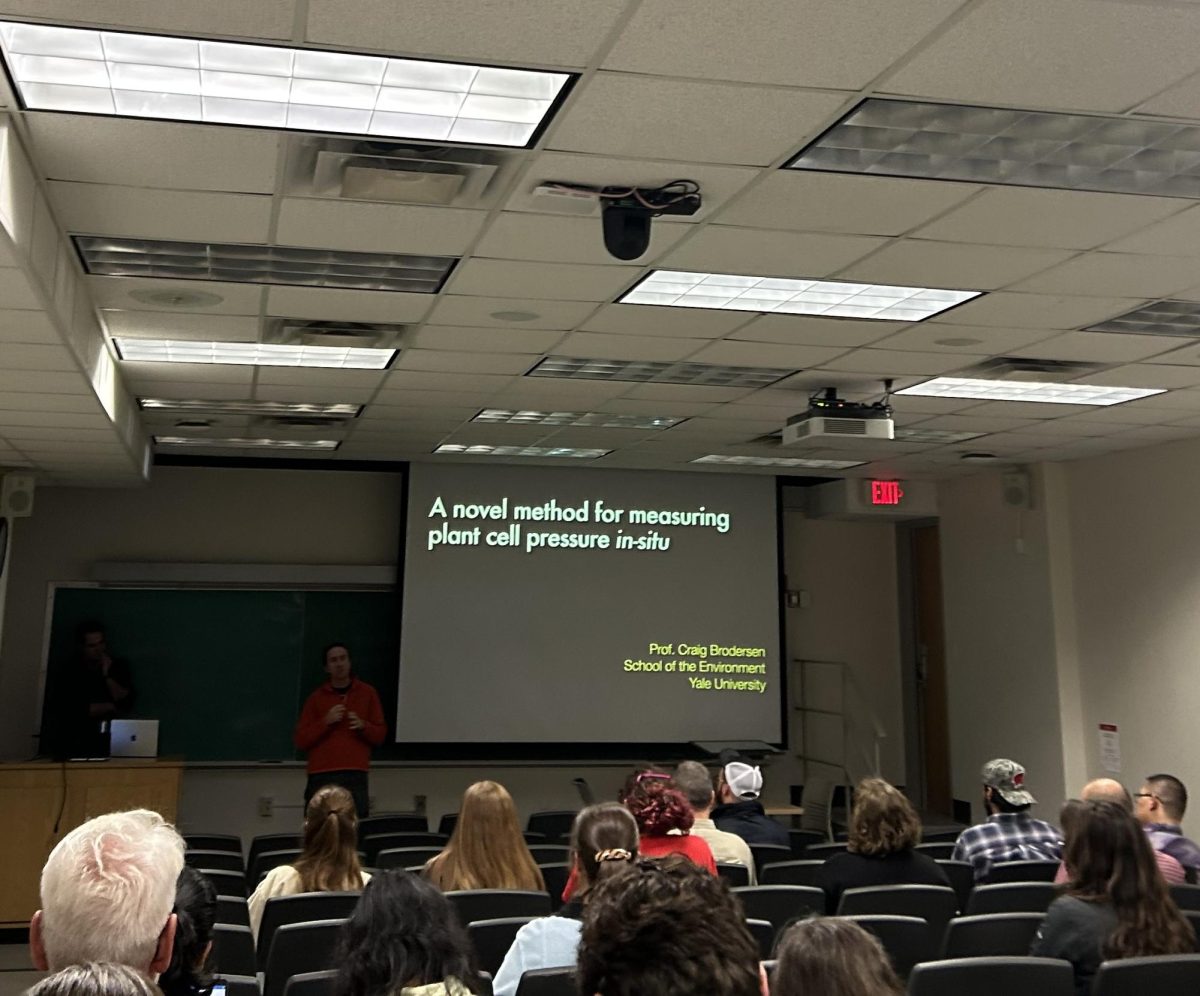It has been more than three weeks since 75,000 to 100,000 fervent Madisonians took to the streets to take part in one of the largest protests in the nation’s history: the Women’s March.
But now that the march is over many have wondered, what, if anything, stands to change?
University of Wisconsin Sociology professor Randy Stoecker said though protests are “momentarily empowering,” without sustained action a protest won’t prompt social or political change.
Madison community marches in solidarity with women around the country and world
Similarly, UW Afro-American studies and history professor Brenda Plummer said it’s not enough to simply have a “feel good” protest where people with similar views come together to vent. Plummer said it was unclear whether the Women’s March was a protest of this sort, but either way it’s important to look toward the future.
“It well may be that people are using [the Women’s March] as a prelude to something rather than an end point,” Plummer said. “It’s to be hoped that … it’s the beginning of something [and] not just a one-off opportunity for people to express themselves.”
Stoecker said the Women’s March needs to be one part of a “bigger strategy” to be effective.
Thom Hemeleski, one of the four main organizers for the Women’s March on Madison, agreed. He said he is optimistic the Women’s March will serve as a “catalyst” for change.
“We said at the rally and we have said many times since then marching is just one thing,” Hemeleski said.
Hemeleski has already seen citizens take action.
The Women’s March on Madison organizers started a new Facebook page called the Women’s March on Madison: Next Steps. Hemeleski said their goal is for the page to be a “focal point” for information about ways citizens can stay mobilized including attending meetings, joining other protests, writing letters to representatives and more.
“I hope that everyone who was at the march walked away from that thinking, ‘I should be doing something,’” Hemeleski said.
Stoecker, however, said a weakness of Madison Women’s March was there wasn’t enough effort to organize the crowd. No one collected the protesters’ contact information to connect them in the future, he said.
Compared to the 100,000 Madison residents who attended the march in January only 1,096 people like the “Women’s March on Madison: Next Steps” Facebook page and only 253 follow the Women’s March Madison twitter page.
But Madison School Board candidate Ali Muldrow, who helped lead the march, said she thinks local activists will continue to generate energy.
“The protests will allow us to be connected to each other in a way that impacts everything,” Muldrow said. “There’s a ripple effect to what we did.”
John Kinney, member of the UW student organization the Socialist Alternative, said his organization — which co-sponsored the Women’s March on Madison and organized the walkout during President Donald Trump’s inauguration — is also pushing for more people to become active.
UW students walk out of class in opposition to Trump’s inauguration
The Socialist Alternative is planning more events. They already co-sponsored a Feb. 9 discussion about Marxism and feminism with the Campus Women’s Center.
“We’re always looking for other groups to organize with,” Kinney said. “It’s just much easier to get bigger numbers and have more pressure on legislators.”
The group is also trying to grow in numbers. Since the walkout Kinney said his group has almost doubled in size. Eventually the goal is to start backing their own political candidates.
Hemeleski said another goal is to inspire more Madison residents vote in local elections, 2018 statewide elections and the next presidential election.
To spur action nationwide, the Women’s March movement has launched a campaign called 10 Actions for the First 100 Days. Their goal is to take action on issues “we all care about” every 10 days. So far that has included encouraging activists to write postcards to senators, host local meetings and block a Senate session, according to the Women’s March website.
The Women’s March, which has 409,000 followers on Twitter, also plans to organize a general strike across the U.S. called “A Day Without a Woman.”
The will of the people will stand. pic.twitter.com/SKJCRLhRKn
— Women's March (@womensmarch) February 6, 2017
Pamela Oliver, UW sociology professor and expert on social movements, said though she is not currently in the field studying social activism, she can tell from her social media that people are advocating for a wide variety of things.
People are signing petitions, supporting refugees and undocumented immigrants, circulating checklists of actions that could combat Trump’s policies, calling legislators and more, Oliver said.
“I don’t think anyone thinks that marching once is all you would do,” Oliver said.
But creating lasting change is an uphill battle.
One of the challenges protesters face today is politicians and police know if they contain the protest, it will go away, Stoecker said. Because of this, protests are less revolutionary than they were in the past.
“People need to come up with new creative forms of resistance that make it too difficult, too costly, for the current government to ignore them,” Stoecker said.
Plummer said Martin Luther King Jr. argued people need to protest in a way that creates “tension” in society. It’s important protests remain nonviolent, but they still need to be “disruptive” so they can spur debate and dialogue. Right now, Plummer said she doesn’t think enough tension has been created.
Oliver said different protest strategies could include blocking a freeway, large boycotts, sit-ins or any other actions that prevent normal activity from happening.
But even if the current protests don’t prompt immediate change, Oliver said they will have “complex consequences.”
“At a minimum you’re going to have this whole generation of people who’ve had the experience of protest,” Oliver said. “They’re hoping to get involved in politics. They’re hoping to reverse what happened so there will be a weaker Republican Party in the next election. That’s what they’re trying to do.”













